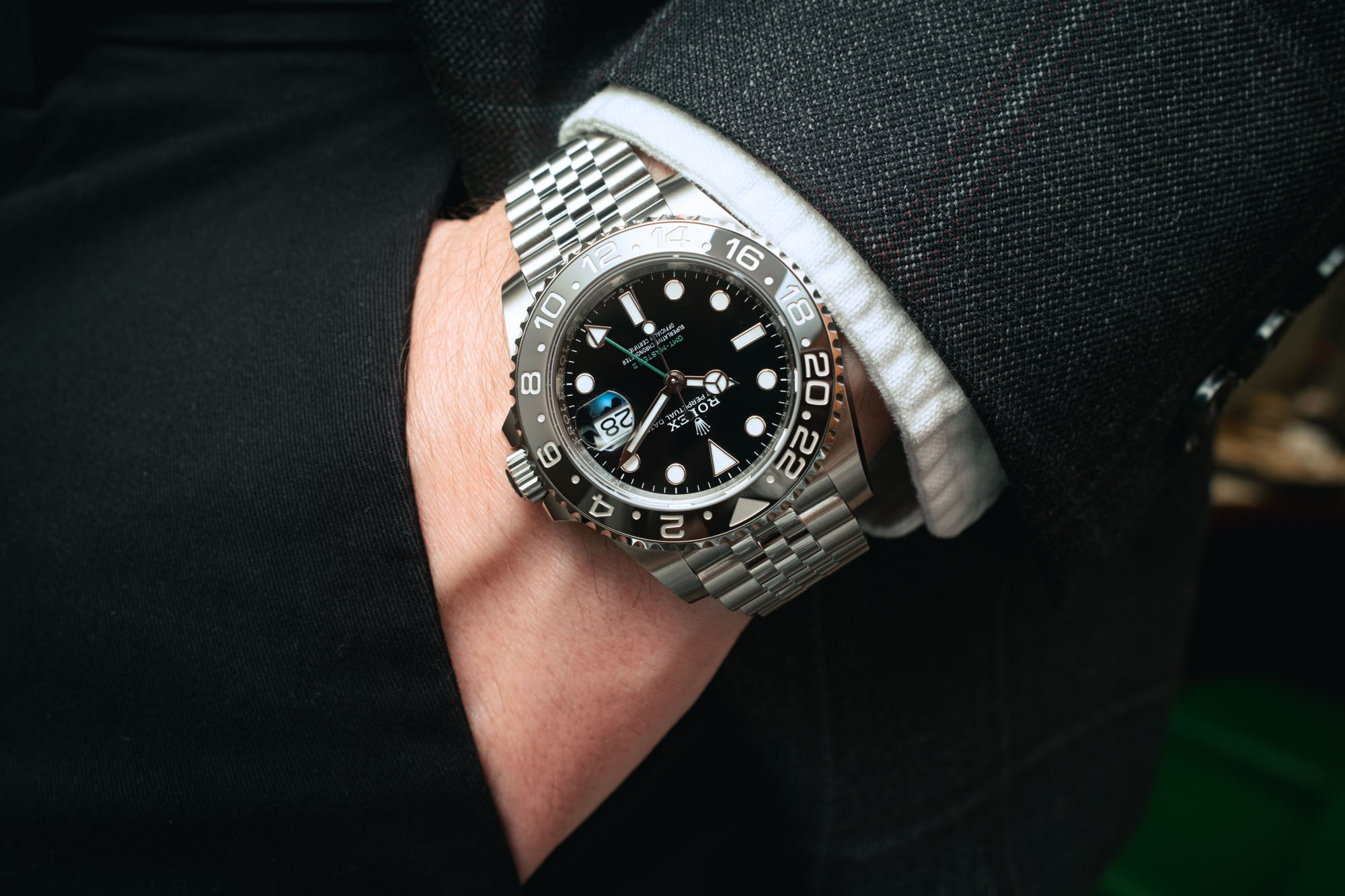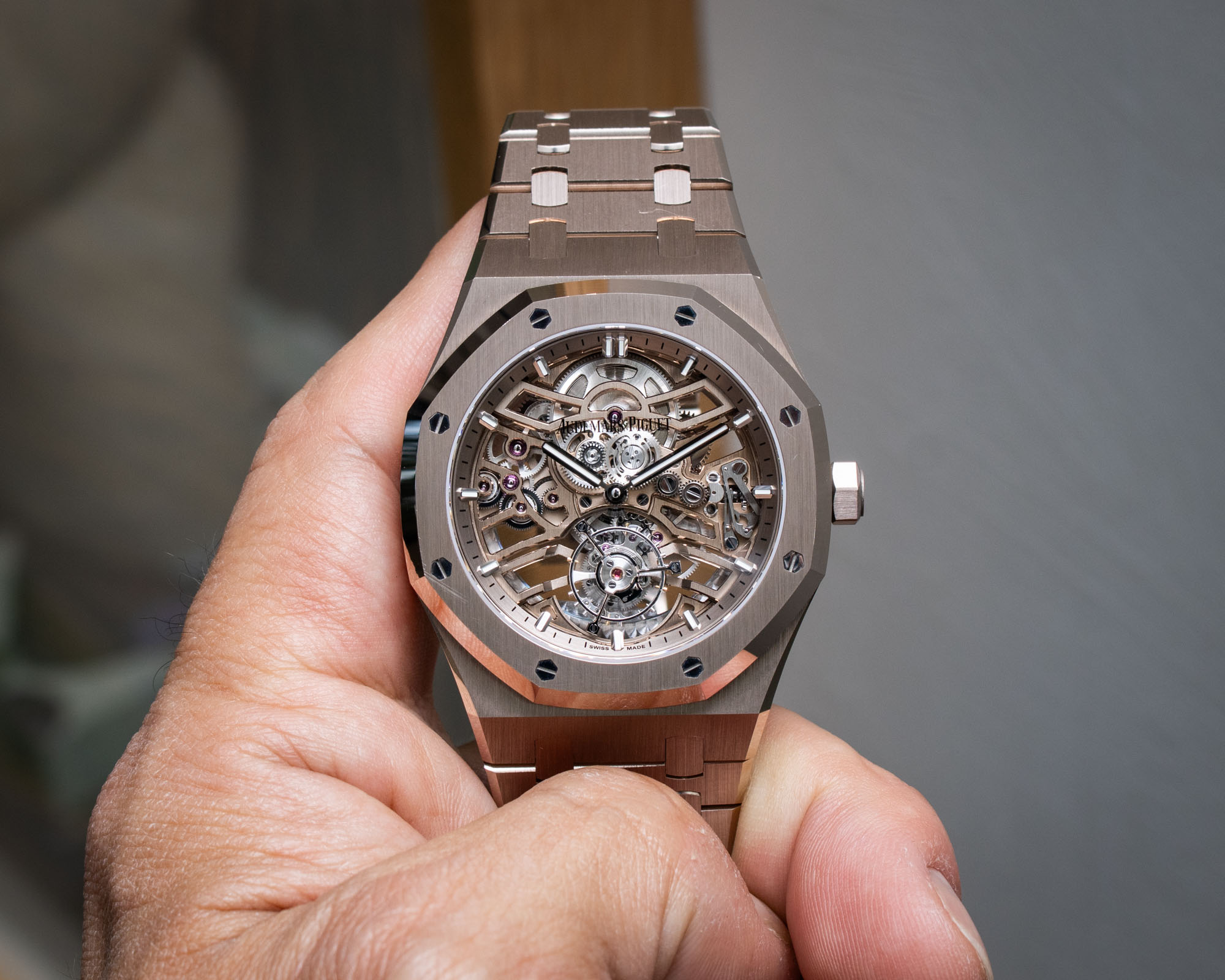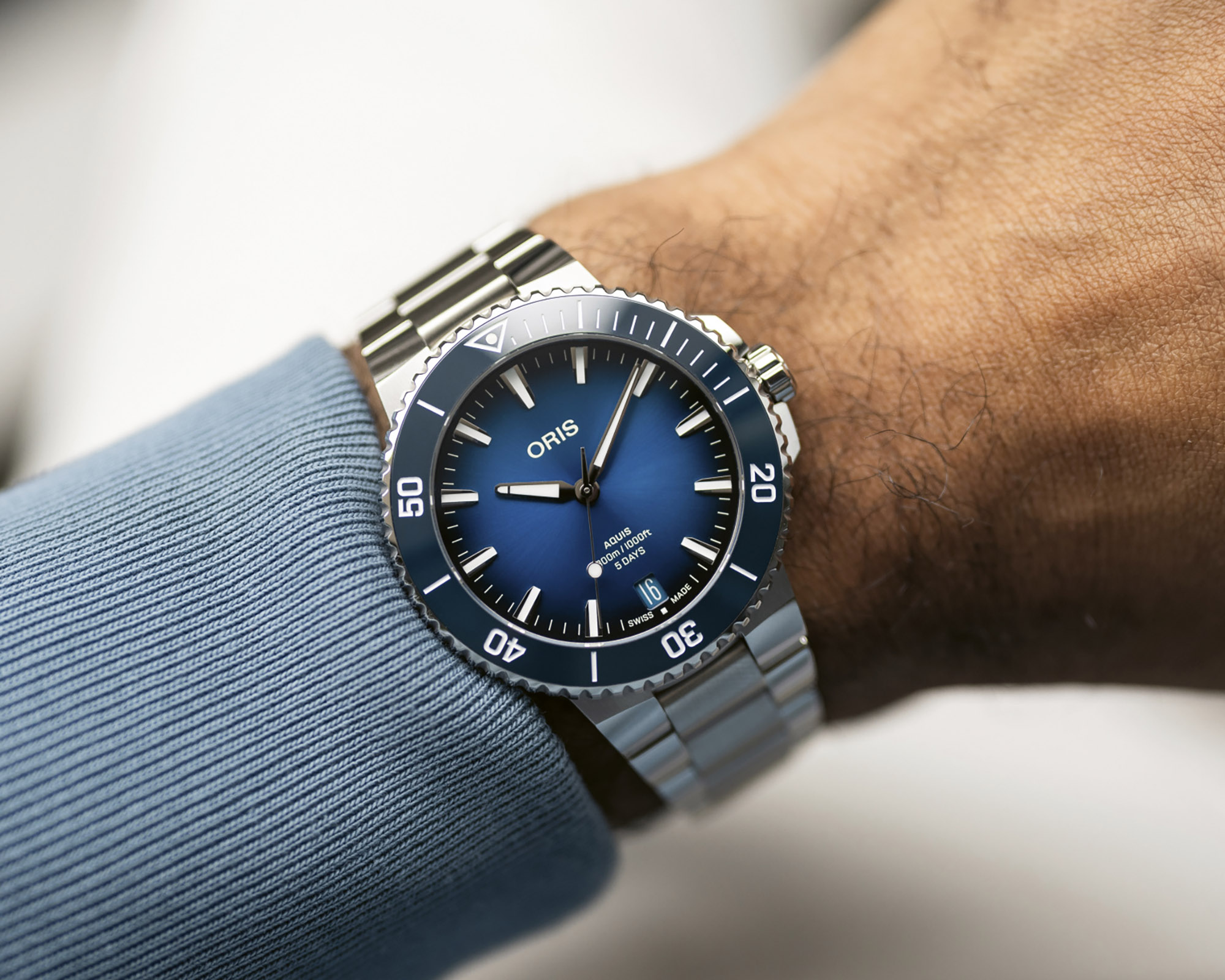
Depending on one’s business goals, it can be very challenging to run a luxury watch brand beyond the exciting start-up phase, when everything is new and exciting. Most people in the watch industry work for brands they personally didn’t start, and whose founders may be long since deceased. Those professionals never even experience the birth of a brand or the tumultuous time before a company finds a group of customers interested in what it produces. In most instances, people working in the watch industry are given a catalog of products and a brand history, with relatively wide latitude regarding how they price their products or where they are sold.
Since most wristwatches stopped being tools used daily by regular people some decades ago, their appeal is emotional and celebratory. As much as brand executives like to plot and forecast revenue results, the reality is that success is often random and hopes for growth can be quickly dashed. That has not stopped corporate-minded business professionals from trying to game the system. Over the last two or three decades, many corporate interests have become involved in the watch industry. Their aim, for the most part, has been to buy desirable brands that can produce something special, and then deliver them on a world stage for (hopefully) more eyeballs and consumer interest. That means many people who currently operate watch brands aren’t per se interested in advancing the visual or technical art of watchmaking, but rather in making as much money as possible. As I said before, that comes with considerable challenges and risks.
Rather than start with a novel idea that they need to implement to determine if the market likes it (i.e. open-minded experimentation), managers in this space too often begin with the desire to earn a profit from investments, and then try to guess in advance which investments (such as the cost of a new watch model or marketing campaign) will make them a return. A rudimentary analysis of the practicality and psychology at play here will easily reveal that this particular business mentality is not likely to result in the creation of much creativity or art. No self-respecting artist, designer, or creative director would promise actual commercial results before a product is completed. This fact of life has frustrated financial interests sold on the idea that watch brands print currency and that the world has an endless appetite for buying watches (provided they are expensive enough).

Why is this discussion relevant to an article with a title that discusses price increases? Before any brand raises prices, they typically try to increase the volume of goods sold — meaning that increasing prices is not their first strategy to earn more. To make more money, the most common approach is to profit through volume. If you can make and sell more of a successful product or idea, then you will make more money even if prices remain the same and, in some cases, even if they go down. Watch brands prefer to earn money by selling more watches to more people. This is why the industry sees so many variations on the same thing (such as new colors or materials on existing watch models). Making slight tweaks to existing products you have already invested the know-how to manufacture is a celebrated way of appearing to sell something new while producing more or less the same thing. With that said, brands can only get away with producing the same watch models for so long before the market loses interest and the competition advances with a superior product. Even successful companies who purport to sell the same watch improve those models at regular intervals because they inherently know watch models have a very real shelf-life before they become less competitive. (Rolex is a great example of this.)
When a watch company is at the point when they must pour money into research and development or creativity, it comes with the accompanying fear of uncertainty. Only personality-led companies who have confidence in knowing what consumers want next will commit to such necessary investments. Even for celebrated creatives, this endeavor is fraught with risk and challenges and emotionally detached financiers rarely give them much runway to prove themselves. The result is that most corporate-owned watch brands are slow and loath to spend when the resulting return is speculative. For this reason, the established luxury watch brand community has adopted a strategy of raising prices to increase profits. They do this while being bolstered by a cottage industry of academics and consultants that has popped up over the last two decades and provides a corpus of studied business models, financial reports, and anecdotal data designed to inspire and guide corporations with little expertise in running artistic luxury companies.
Just a few months ago, I was reading about the structure and performance of luxury brands and encountered a passage that put forth the following, in so many words: “Always keep raising prices.” Certain luxury brands over the last few decades were noticed to have increased their prices and subsequently increased their sales (the Dom Perignon example is a classic favorite, and in the watch space brands like Rolex, Omega, and TAG Heuer have been referenced). It is believed that by merely increasing prices, brands sent a signal to consumers that their products were better, especially when compared to lower-priced competition. This is called price anchoring, and brands of all types use it all the time. It was noticed that in crowded luxury goods markets, consumers armed with little education on how to distinguish between better and worse products used pricing as a guide. This psychological tendency is at the core of why some consultants and academics believe the price increase strategy works. I wrote more about this topic when discussing the downward normalization of watch prices.

It is a natural reaction to believe that something priced at $1,000 is better than a similar object priced at $100 — Many of these studies look at periods when consumers were upwardly mobile and trying to convey accumulated wealth to their peers and colleagues. Brands noticed that few consumers actually had the sophistication to classify the quality of most luxury goods. Given that Americans and other Western consumers tend to trust pricing (or have traditionally), the power of price increases was related to the desire for consumers to reward themselves at various price points. For example, it is very common for a consumer to feel, “I want to reward myself with a $10,000 watch,” as opposed to actually desiring a specific product before considering the price. There is still a long-held romanticized notion in the luxury watch space that consumers develop a desire for a particular product in a vacuum without knowing what it and its competitor products cost. The reality is different and, in my experience, even the wealthiest consumers who buy watches with any regularity are keenly aware of both what a product “should” cost to buy, and what competitive alternatives are available in the same price range. As I alluded to, there is still somewhat of a “head in the sand” response by many legacy luxury brand managers when facing this issue. More educated and information-motivated consumers demand value, while brands hope they can romance people into spending more on the same products, or on products that compete weakly. This latter strategy is far less effective in 2024 than it may have in, say, 2004.
Luxury brand consultants and academics seem happy to keep telling corporate brand managers that they are safe when applying the “always raise prices strategy.” This mentality is so pervasive that it has probably been overdone, leading to price increases that are too frequent and too high. That said, let’s briefly explore some of the arguments that advocate for this “always raise prices” approach. The first is that consumers who purchased products at lower historical prices will feel so much better about their goods in the future when they simply cost more to replace. Those presumably happy customers will show off the products (wear them in public) as a result. Customers who proudly wear the products are a visual endorsement to other consumers that such a product is desirable. Also, when consumers notice that prices keep going up, it pressures them to buy since they are concerned that prices will keep going up. Brands hope to instill a sense of “buy it while I can still afford it” mentality in consumers. These represent the typical justifications for why increasing prices doesn’t harm relationships with existing fans and followers.
An interesting, related argument is how increasing prices for products has a positive effect on resale values. If the price of an item in 2024 is so much higher than it was in 2014, then the pre-owned prices for 2014 goods will naturally go up, even though those products cost no more money for the original owners to part with. Since resale prices and pre-owned sales are such an important part of the luxury brand marketplace right now, brands are going to be highly receptive to any strategy that allows them to not only increase consumer confidence in the long-term value-retention of their goods but also helps prevent steep discounting which can hurt consumers willing to pay full price. There is a strong belief high up at European luxury brands that discounting is poison and that each brand should aspire to sell as many products as possible at full price. Many market experts and economists will naturally take issue with the presumed wisdom of this position, but such thinking indeed represents a prevailing mentality in the luxury watch and brand space.

As I observe the contemporary luxury watch marketplace and changes in relevant consumer behavior (especially over the last five to 10 years), I have come to the conclusion that the classic idea about the wisdom of regular price increases to create growth for luxury watch brands is mostly misguided. Some brands can seemingly get away with it some of the time, but it would be dangerously incorrect to think it can work for all brands most of the time. As I mentioned above, part of the historical reason why the regular price increase strategy worked was because consumers were high-intentioned (wanted goods badly) and poorly educated (didn’t know how to make good product choices). Both of those things do not correctly describe most of today’s consumers. Rather, we are largely in a buyers’ market where competition for consumer dollars is constant and unrelenting. Consumers have no shortage of things to spend their money on to feel good but have limited amounts of money. Brands not only need to very thoroughly prove their products will deliver the emotions a consumer is willing to pay for but must beat out a longer-than-ever list of competitors. Between online shopping comparison shopping and pre-owned products vying for attention along with brand-new products, consumers have more choices than ever when it comes to buying a high-end watch.
One of the things I notice happens when brands raise their price points is just how price-sensitive today’s consumers are. When most brands raise prices even a little bit, I find that the people who were happy to pay the lower price are no longer as happy to pay the higher price. Newer start-ups and microbrands are less sensitive to this because their prices tend to start pretty low to begin with. They can normally step up prices a bit before hitting a wall with their customers. More established luxury watch brands are normally selling to people who chose that brand because it represents the top of their spending ability, meaning that most consumers buying a luxury product tend to reach as high as they can from the outset. They normally don’t underspend on luxury goods because doing so doesn’t deliver the emotional kick they want out of the purchase. Accordingly, when brands raise their prices, they end up alienating a large part of their existing customer base, who will no longer gladly do business with them. In my opinion, this loss of income can often be more severe than any gains in margins related to selling more expensive products. Persistently trying to claw upmarket hurts brands more than it probably helps them.
The implication is that when brands raise their prices these days, they often have to look for an entirely new customer base. That means the cost and time of forming brand-new relationships with customers and demographics, and probably needing to apply patience while getting to know a new consumer mindset. Brands that raise prices often believe that their customers have a more elastic ability to adjust to higher prices. That may be true in some limited ultra-high-spending areas of the market (think $300,000 and over per watch), but for the most part, consumers like to stick to spending levels they dictate, not dictated by brands. Rather than appeal to these consumer inclinations, many brands seem to fight them and employ manipulative tactics designed to stoke insecurity and get customers to spend more than they are comfortable with.

Most companies don’t like to leave money on the table, but that is exactly what happens when brands abandon a successful relationship with a price category in the hopes that they can achieve the same results with a higher average retail price. Let’s say a brand does well when selling sports watches at an average price point of $2,000. If that brand ups the average price to $3,000 or $4,000, then they have abandoned the customers who spend at the $2,000 price point. Most of the time those brands don’t simply release a $4,000 watch to supplement their $2,000 watch, they simply double the price of the $2,000 watch. Brands seem to believe that by “going all in” on price increases across the board with their products, they will make a firm statement to consumers about their value. This is an unwise position because the reality is that even if the customer agrees your value is higher, much of the existing customer base will no longer be able to afford you. More often than not brands who want to compete at a higher price point fail to simply experiment by coming out with some higher-end models. Rather, they ruin the delicate formula for success an existing model enjoyed at one price point, only to fundamentally change the price and thus who can afford to buy it. More so, there is no certainty that consumers who typically spend at a higher price point will have any interest in buying something just because it is at a price they are familiar with.
The current and future economic climate and nature of consumerism do not lend themselves well to the ongoing price increase strategy working in the future for most brands. Instead, authentic luxury brands need to be just that: They need to appeal to the heart and the mind by showing that they are making the best possible product and passing on the cost of production plus a reasonable margin to the consumer. That is the story they need to tell with each product and each brand move. People are willing to pay for real quality and exclusivity, but when you formulate it in a marketing department consumers will eventually notice and rebel. We live in an era where demand for watches is strong, but consumers are well-armed with options and information. If you are going to increase prices, be prepared to justify it and find a whole new group of people to sell to. Otherwise, stick to what you are good at and evolve slowly and gradually over time.

